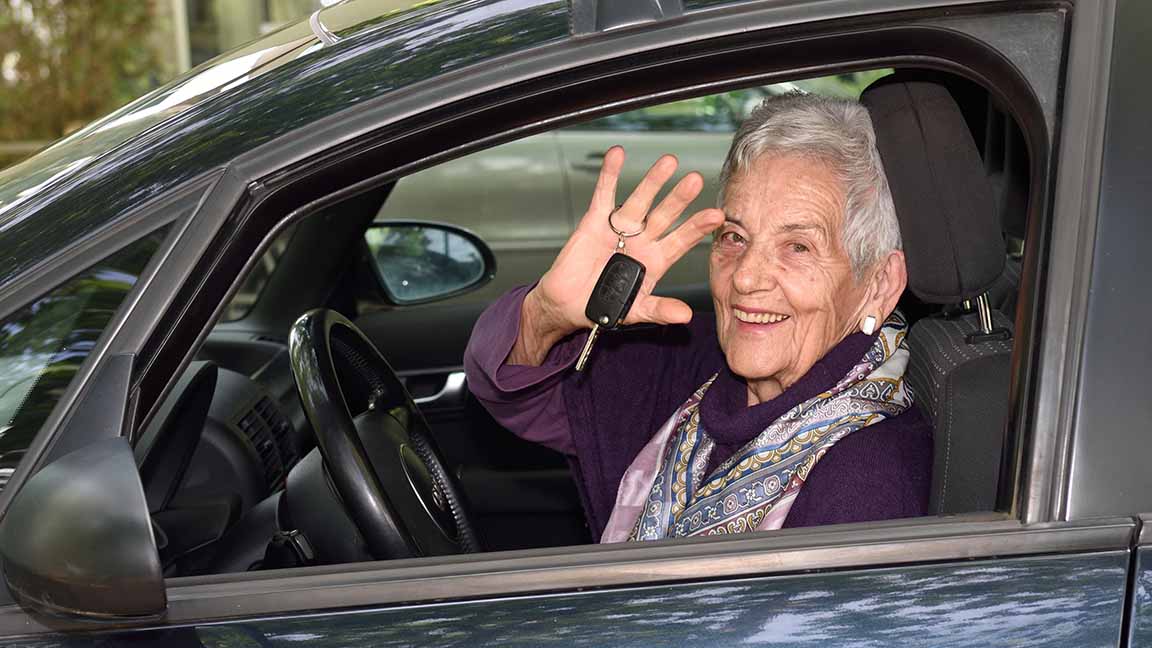Most drivers don’t give a second thought to basic driving tasks like changing gears or checking blind spots – until those skills are gone.
That’s where some people find themselves after they’ve had a stroke. Operating a motor vehicle is something they once took for granted; now they may be left wondering if they’ll ever drive again. Fortunately, many stroke survivors can get back behind the wheel with proper training and adaptive equipment.
“Every stroke is different,” says Ian McClure, a certified driver rehabilitation specialist at Tidelands Health Rehabilitation Services at Murrells Inlet. “There’s a mixed bag of potential challenges, but there’s almost always going to be something needed to get that person back to driving — some type of problem to overcome.”
McClure specializes in helping people who’ve had stroke get over those hurdles. He evaluates stroke patients to identify their challenges then helps them find ways to adjust. More often than not, this involves adaptive vehicle equipment.
McClure says the type of equipment needed depends on the type of stroke the person had. A stroke in the right side of the brain can cause left hemiplegia, a type of paralysis that affects the left side of the body, and a stroke on the left side of the brain can cause right hemiplegia, which affects the right side of the body.
Right hemiplegia can be problematic for driving because the right hand and foot are so critical to operating a car’s gears and pedals. The solution to overcoming this challenge is to have a car modified with a left accelerator pedal and a gearshift on the left side of the steering wheel.
Someone with left hemiplegia has fewer obstacles, McClure says, but they will require modifications if their car relies on a manual transmission because use of the left foot is necessary when driving a stick-shift a vehicle.
After any vehicle modifications have been made, drivers have to undergo training using the new equipment and an evaluation by a driver rehabilitation professional such as McClure. The entire training process typically takes about 6-10 hours over the course of several sessions.
Once approved by the driver rehab specialist, the driver will have to pass a road test conducted by the South Carolina Department of Motor Vehicles.
“Driving with any modifications requires a new license and it will indicate a restriction on the license,” says McClure. “Once you have those restrictions on your license, you are only authorized to operate the vehicle that has those modifications.”
People who have experienced peripheral vision loss due to a stroke face a different set of challenges, he says. Those drivers must be evaluated by an ophthalmologist. If total bilateral peripheral vision is less than 110 degrees, the person is ineligible to drive. If it’s between 110 and 140 degrees, he or she must have approval from a medical advisory board before driving.
Anyone above 140 degrees should be cleared to drive, says McClure, but they may still benefit from certain adaptive equipment and training.
“There are specialized mirrors you can get and compensatory strategies you can learn,” he said. “Plus, these days there’s so much technology available to help, such as blind spot detection, backup cameras, cross-traffic detection and adaptive cruise control.
“There’s a million and one things that can be done, so anyone who’s having any type of issue affecting their driving should be interviewed by a driver rehab specialist.”





